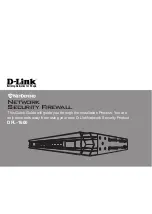
PMP 400 and PTP 200 Series
Canopy User Guide Supplement
Issue 3, January 2009
Page 27 of 45
•
A 5.4 GHz SM or BH with an integrated antenna has a
Net
Antenna
Gain
of
17
dB.
•
The antenna sold with the connectorized 5.4 GHz AP has a gain of 18 dB and cable
loss of approximately 1 dB, giving a
Net
Antenna
Gain
of
17
dB.
•
A 4.9 GHz SM or BH with an integrated antenna has a
Net
Antenna
Gain
of
16
dB.
•
The antenna sold with the connectorized 4.9 GHz AP has a gain of 17 dB and cable
loss of approximately 1 dB, giving a
Net
Antenna
Gain
of
16
dB.
•
Any radio using DFS will use the
Net
Antenna
Gain
to appropriately adjust sensitivity
to radar signals. The use of DFS is determined by the
Region Code
setting on the
Configuration => Home page.
•
The Auto-TPC used by the PMP 400 Series system takes into account the
Net
Antenna
Gain
so as not to exceed national or regional EIRP limits.
Procedure for setting the Net Antenna Gain
1. If using a BH or SM with an integrated antenna, or a connectorized AP with the
connectorized antenna sold with it, leave the
Net
Antenna
Gain
on the Configuration
=> Radio page set to the factory default of
17
dB for 5.4 GHz radios or
16
dB for 4.9
GHz radios.
2. If using another antenna, set the
Net
Antenna
Gain
to the gain of the antenna minus
the loss in coaxial cable and connectors.
Important!
Ensure the
Net Antenna Gain
is set correctly. Setting it low or high can lead to
either a system overly sensitive to DFS events or a system not transmitting at its full legal power.
4.6
NETWORK CONTROL PARAMETERS
Network control parameters are configured the same as they are in standard Canopy. These
include, High Priority/DiffServ, NAT, DHCP, VLAN, MIR, and CIR. MIR and CIR are configured
the same way as in standard Canopy, but the operator may (or may not) want to take advantage
of the higher MIR possible to provide greater bandwidth to a given SM.
4.7
FORWARD ERROR CORRECTION
PMP 400 and PTP 200 Series radios use FEC (Forward Error Correction) to extend the range of
the modules. They use Reed-Solomon error correction optimized at 3/4 coding. The coding rate is
not settable by the operator.
4.8
CYCLIC PREFIX (CONFIGURABLE ONLY ON BH)
OFDM technology uses a cyclic prefix, where a portion of the end of a symbol (slot) is repeated at
the beginning of the symbol (slot) to allow multi-pathing to settle before receiving the desired
data. A 1/4 cyclic prefix means that for every 4 bits of throughput data transmitted, an additional
bit is used, A 1/8 cyclic prefix means that for every 8 bit of throughput data transmitted, an
additional bit is used.
PMP 400 Series networks use a cyclic prefix of 1/4 that is not configurable by the user.
PTP 200 Series modules (OFDM BHs) are settable for either 1/8 or 1/4 cyclic prefix. The use of
1/8 cyclic prefix provides about 11% higher maximum throughput, and is recommended in most
cases.
•
The
Cyclic
Prefix
is set on the Configuration => Radio page of the BHM.
•
The default on a new unit, or when the unit is reset to factory defaults, is
1/4
Cyclic
Prefix
.
















































